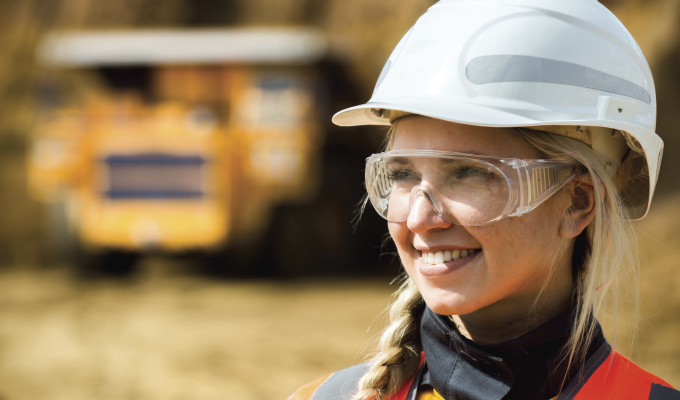The construction industry has been under pressure for years on the labor front. There’s plenty of work to go around but the continuing shortage of skilled workers keeps it in a bind—one that’s only tightened with ongoing supply chain issues and inflationary pressure on costs.
There’s no single solution to loosen the pressure, but the industry, which has long been dominated by men, could make one by creating a more welcoming environment for women. With the shortage of workers expected to reach about 500,000 in the next 2 years, especially as Baby Boomers among them retire, the time is now.
The numbers tell the story. Women accounted for 12.5% of the construction workforce in 2016, which only increased to 14% by 2022. And nearly 75% of the women in the industry believe they’ve been passed over for advancement because of their gender.
By turning that trend around, construction firms will be better able to weather the pressures of the current times and position themselves for the longer term. It’s not all that complicated. Putting five best practices into play will level the playing field, result in a more inclusive environment and give a boost to recruitment and retention initiatives. Here are top considerations:
1. ONE SIZE DOES NOT FIT ALL
Too often, management thinks one size fits all for personal protective equipment (PPE). However, when female employees are forced to scramble to find the correct size work gloves and hard hats, it jeopardizes their personal safety and their ability to do the job effectively. There are PPE vendors that offer the right-sized PPE for women, but contractors often don’t have sufficient amounts in stock. Firms should make the effort to contract with such vendors and keep sufficient stock of PPE on hand to meet all employees’ needs.
2. RETHINK UNSANITARY FACILITIES
In many cases, small jobsites may only have one portable unit that’s too often not maintained. Contaminated toilet seats are an issue, and forgoing use can lead to bladder and kidney infections. Improved toilet facilities with gender-designated units—as well as more facilities for larger jobsites—would be a major step forward. It’s also helpful to make their internal locking systems adequate and functioning, along with sufficient lighting around them for added protection at night. Another must-have: a regular toilet cleaning and sanitation schedule that’s strictly followed.
3. CONSIDER ERGONOMICS IN ORDER TO AVOID WORKPLACE INJURIES
Overall, ergonomic injuries such as musculoskeletal disorders and repetitive motion strains account for a third of all worker injuries, and women are two to five times more likely to suffer from one. Construction firms can offset the risk—to all their workers—by monitoring their workplaces, training people in body mechanics and instituting pre-shift stretching exercises.
One of the greatest risks for women comes from using equipment not designed for their body composition, compounded by personal risk factors such as personal fitness and medications. A safer environment results when employees are provided with tools designed for their anthropometry in terms of weight and handle sizes. Further, safe lifting limits should be instituted. And finally, adjustable equipment handles will help accommodate a woman’s lower center of gravity for pushing and pulling tasks.
4. BE AWARE OF REPRODUCTIVE RISKS
A construction site can host any number of issues that can affect a female worker’s reproductive health, from chemicals on the jobsite to dust or lead. Construction companies should post safety data sheets (SDS) listing any chemicals on site, to ensure everyone’s diligent about wearing appropriate PPE at all times to reduce the risk of exposure. Employers should take into account that remedial actions can be taken by the employees if they do not accommodate pregnant employees with doctor orders.
5. CULTURE COUNTS
Establishing a workplace environment that is not merely safe, but also inclusive, is a big challenge for an industry as male dominated as construction has historically been. The lack of inclusivity has held the industry back in its urgent quest to attract and retain workers. Nearly 25% of women say they’ve often been sexually harassed on the job, leading half to leave or consider leaving the industry.
It takes time to shift a culture, but there’s a payoff in recruitment and retention success. It involves formulating an employee value proposition that revolves around an environment that’s safe, takes into account mental health, and is free of harassment.
Led from the top with an emphasis on an open system of communication between workers and managers, culture should be reinforced by regular training sessions on the values and their importance in the workplace. It should include a policy for investigating incidents of harassment or other concerns, and women should be made to feel comfortable reporting them.
An inclusive environment also requires equitable compensation regardless of gender—an important consideration, as women construction managers are only paid 75 cents for each dollar paid to male managers.
CLOSING THOUGHT
The reality is that construction firms that make themselves more inclusive for women will become more inclusive to all. The shortage of skilled workers is not going to fix itself. Not only will this shift fill a big employment gap, but it will give firms the added luster to prospective clients that they are forward thinking.

About the Author:
Ashley Henderson is an assistant vice president and senior risk consultant for global insurance brokerage Hub International. For more, visit www.hubinternational.com/industries/transportation-insurance.
Modern Contractor Solutions, June 2023
Did you enjoy this article?
Subscribe to the FREE Digital Edition of Modern Contractor Solutions magazine.



